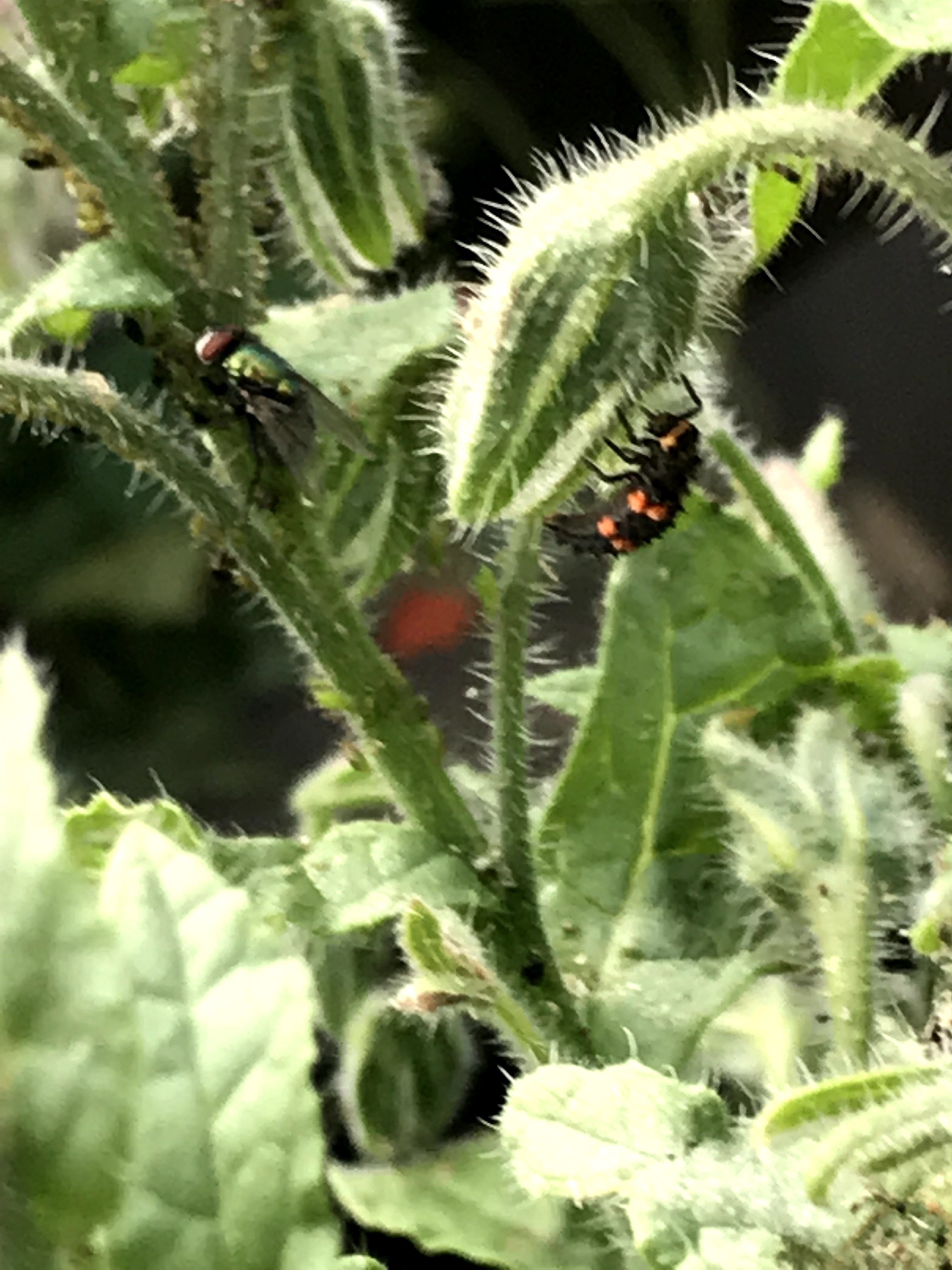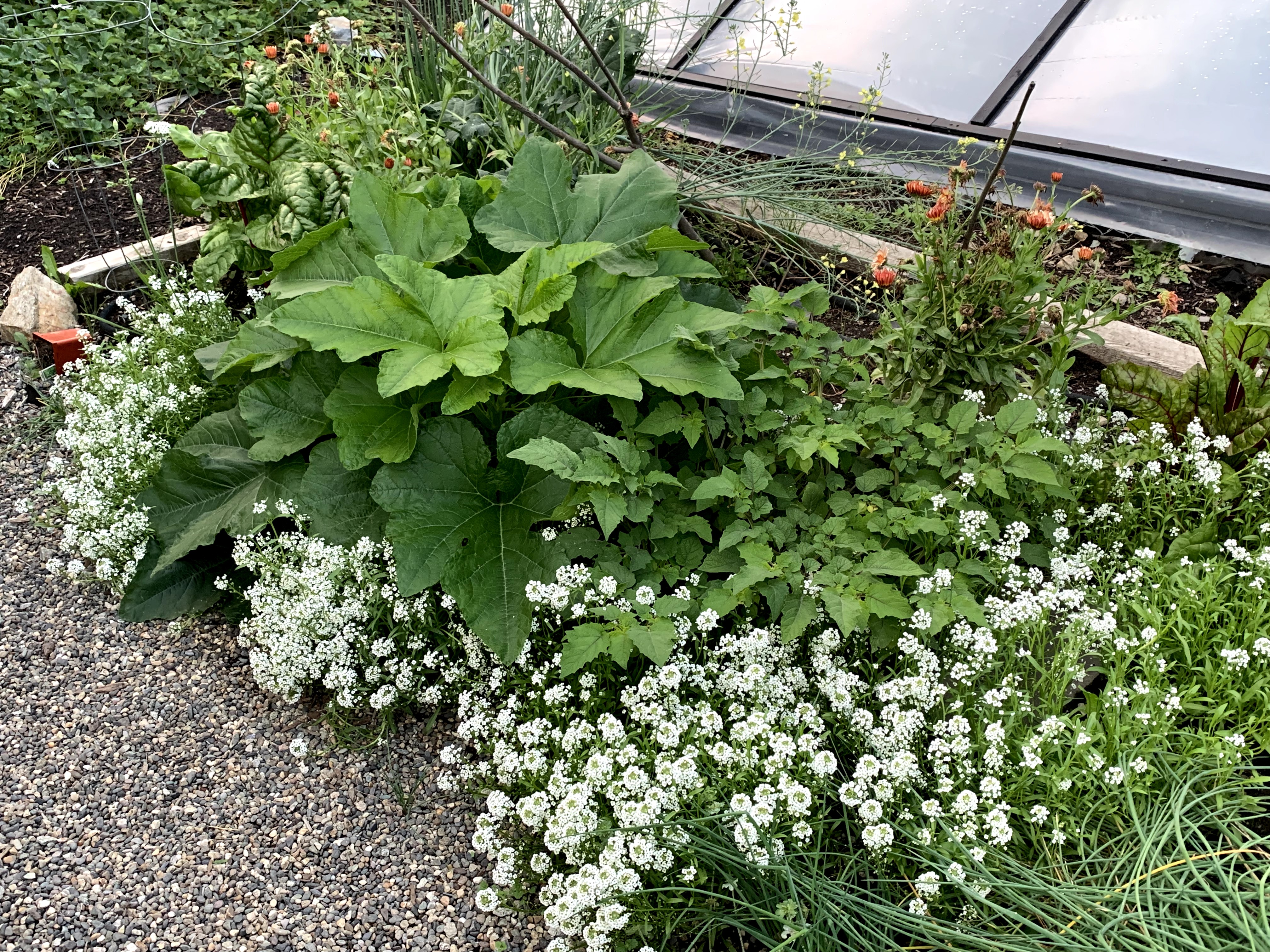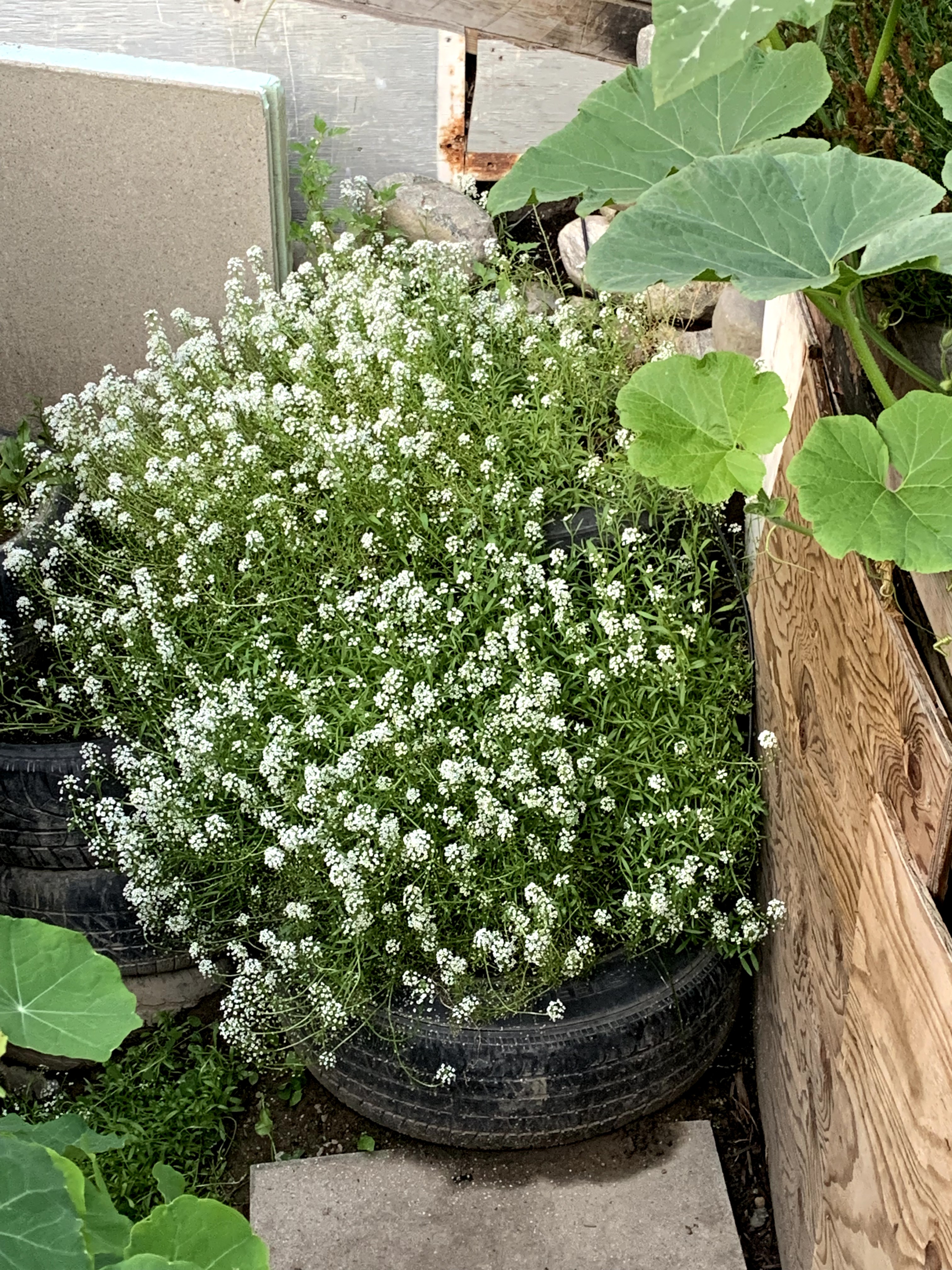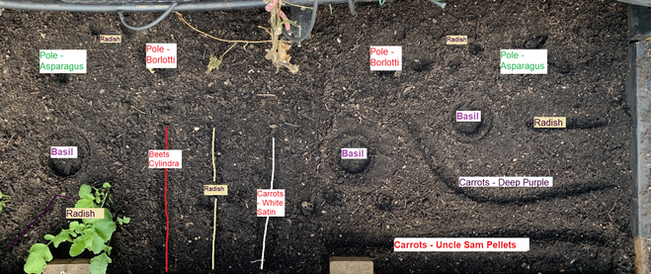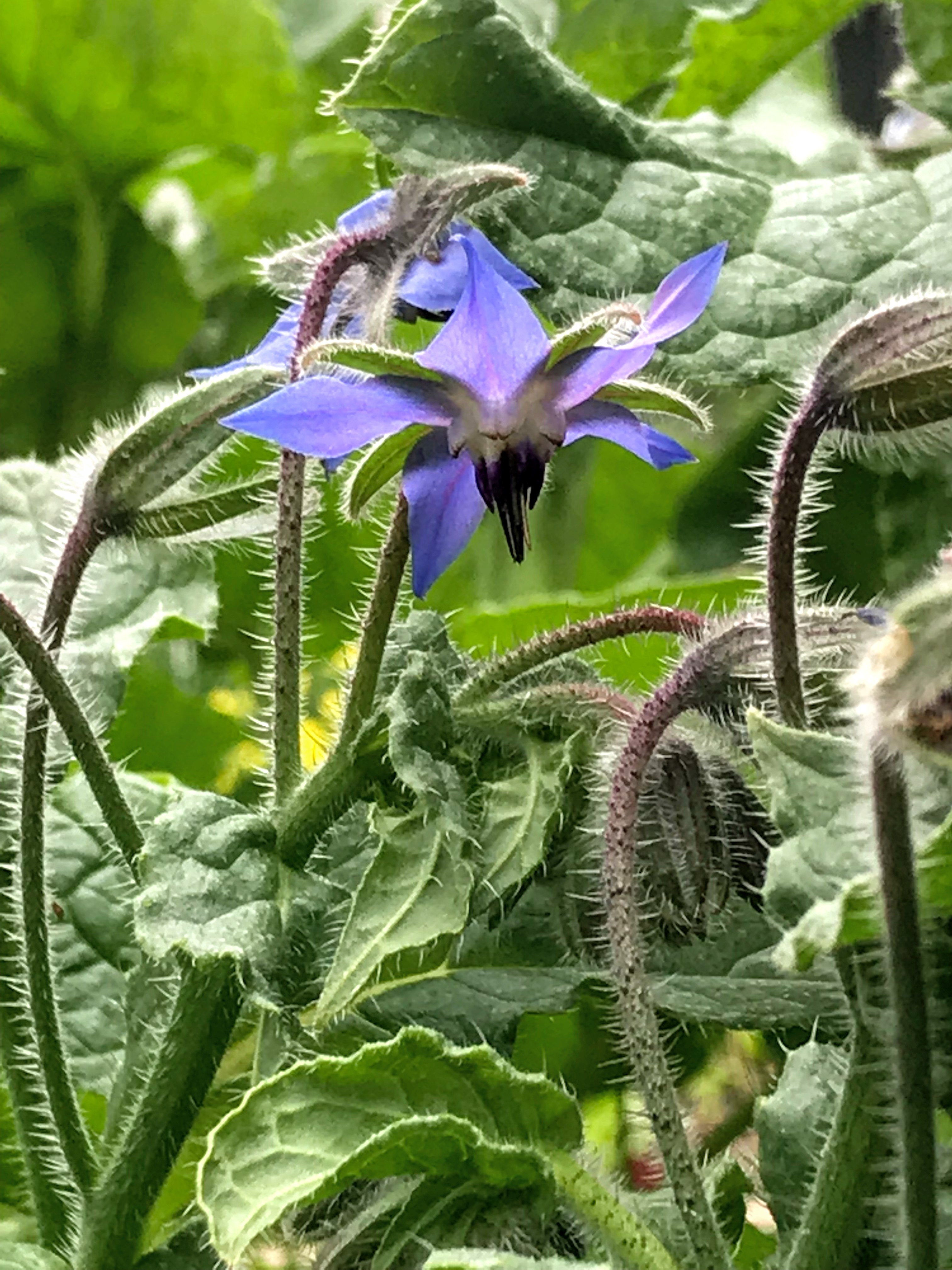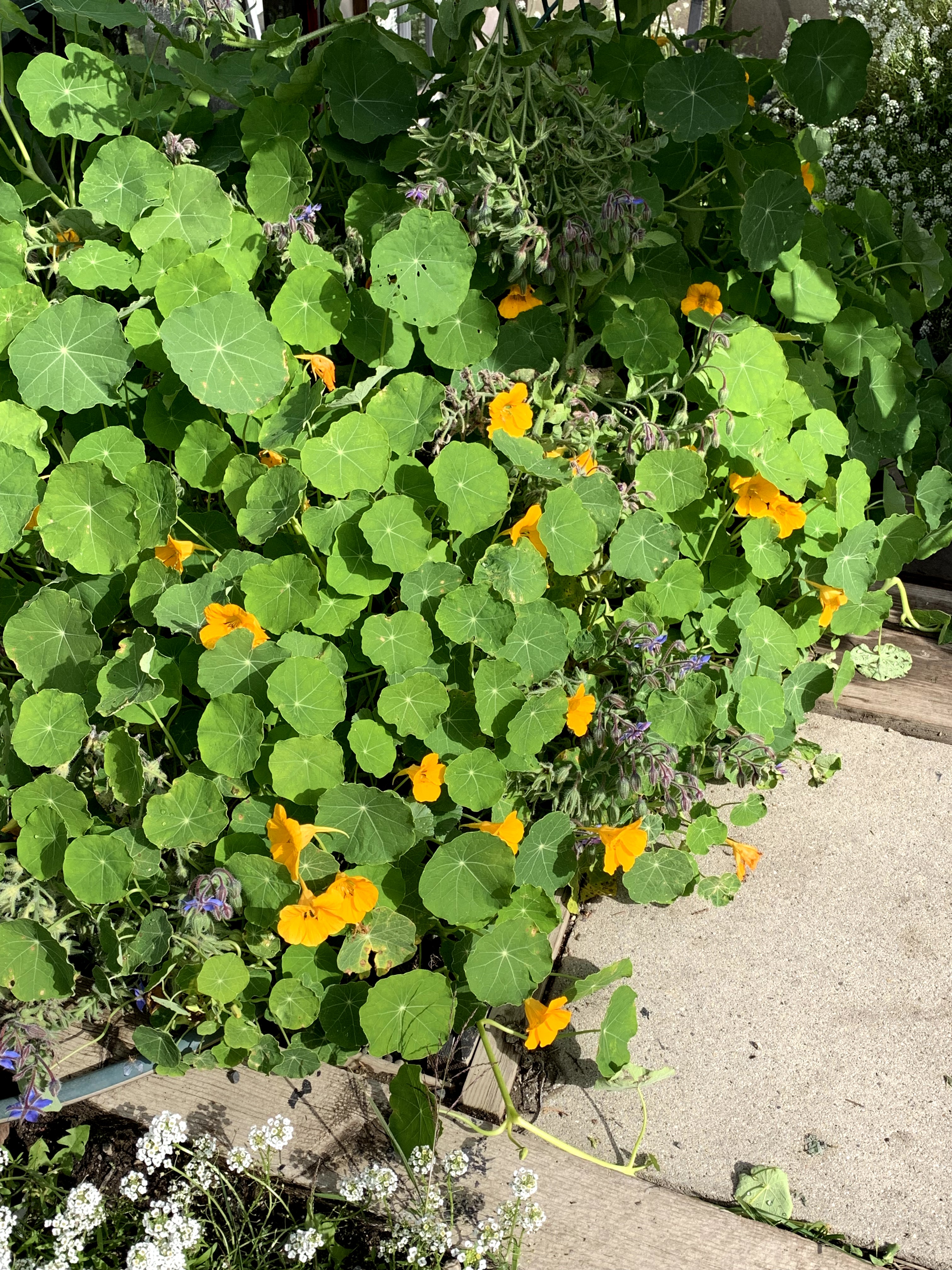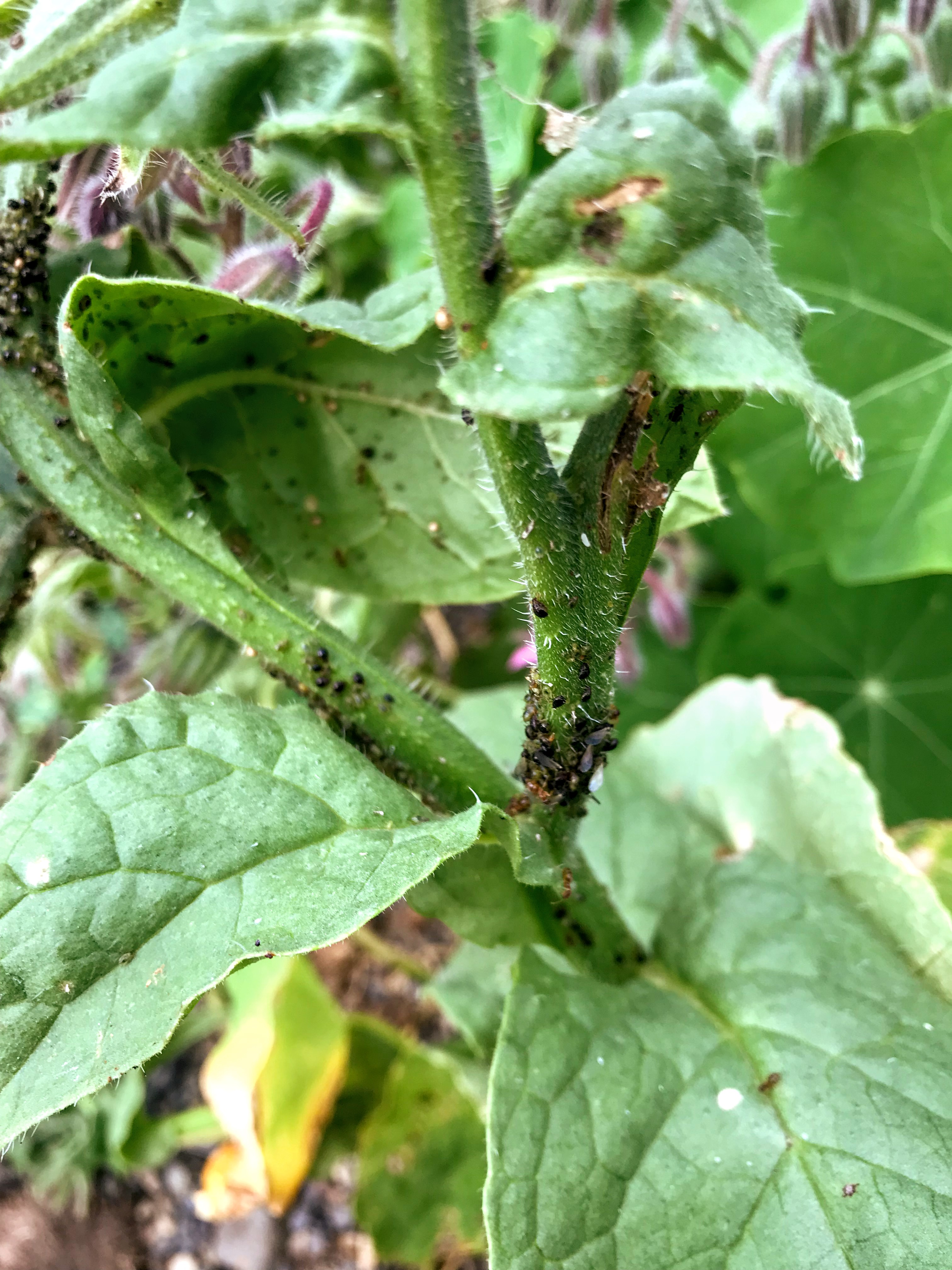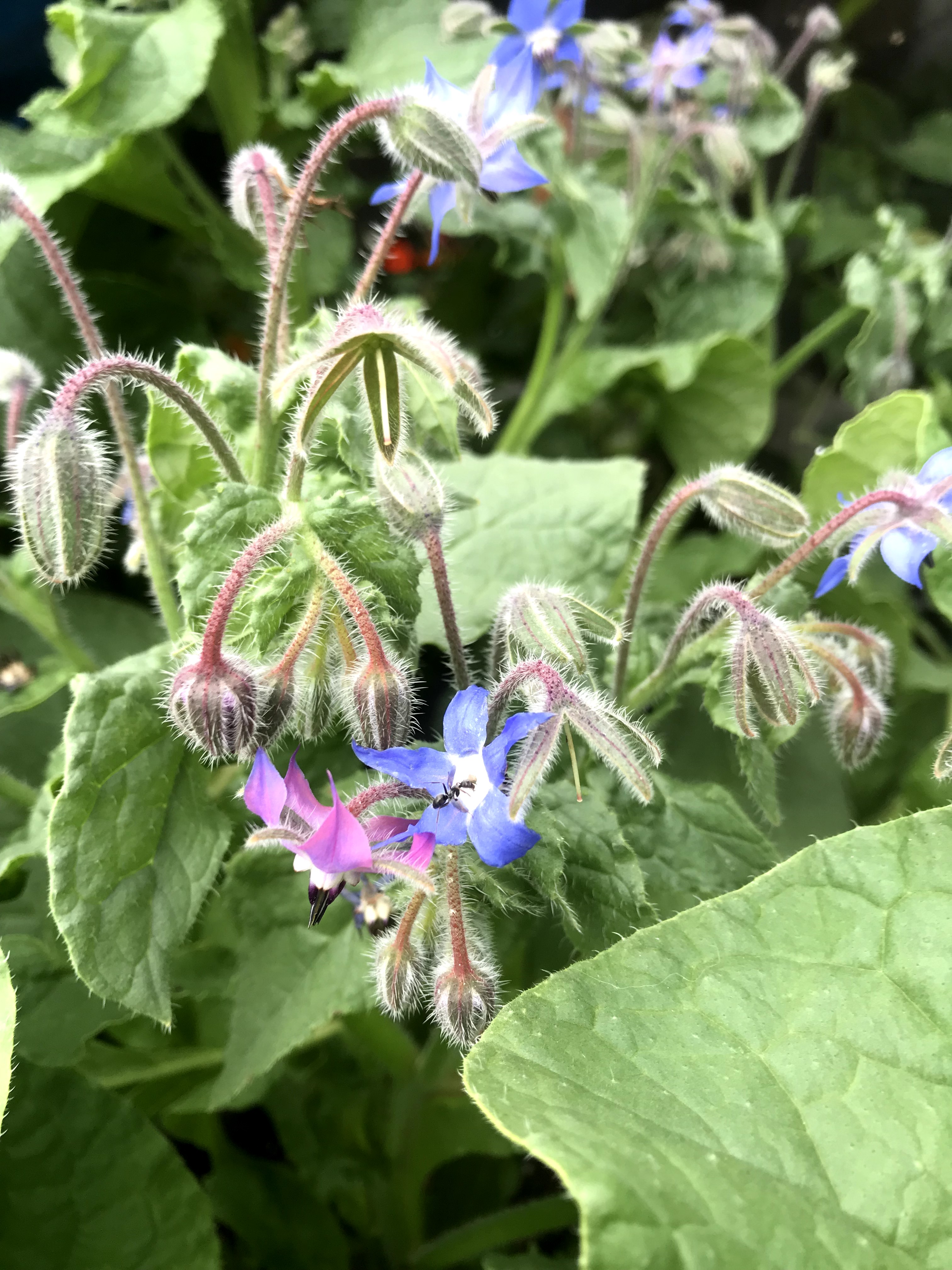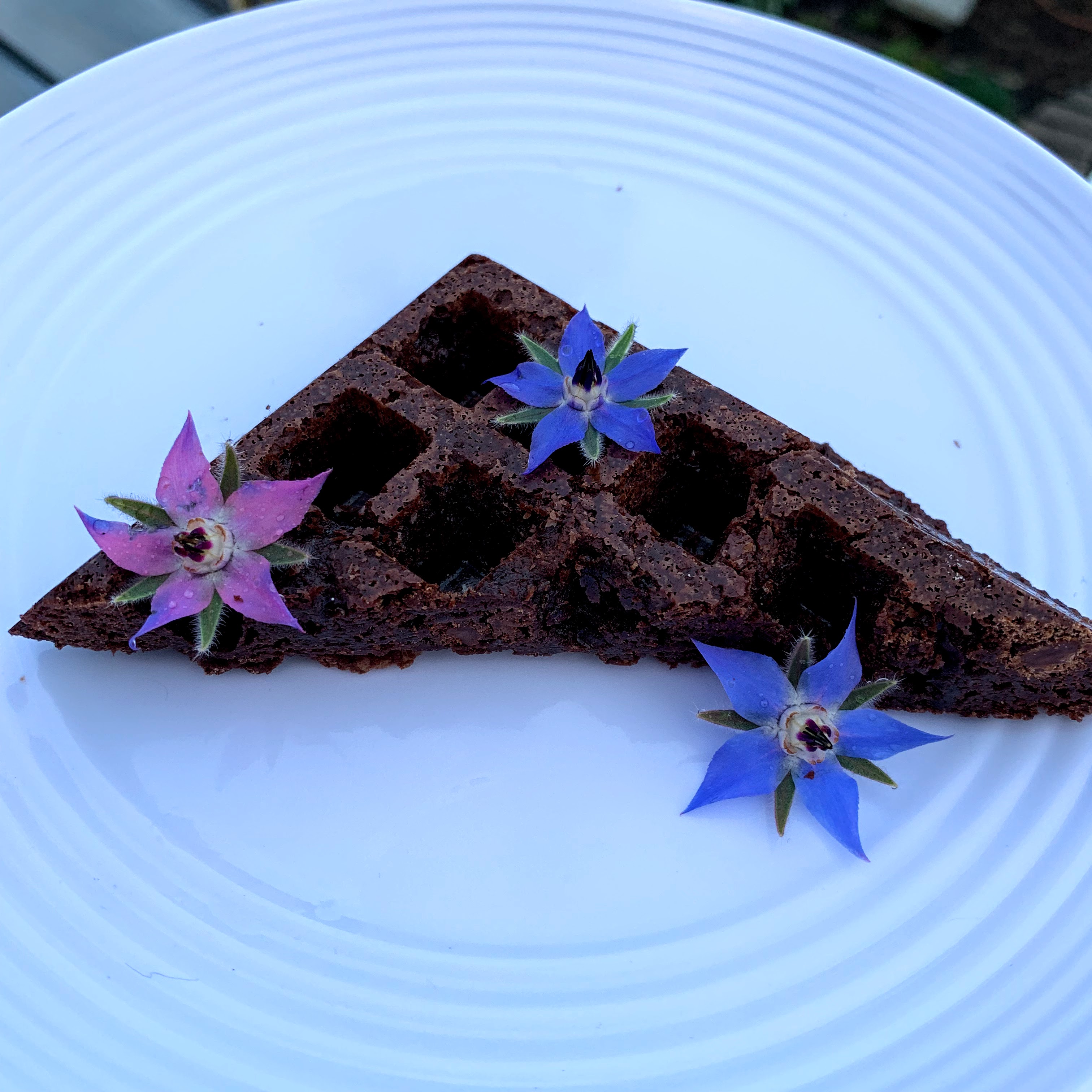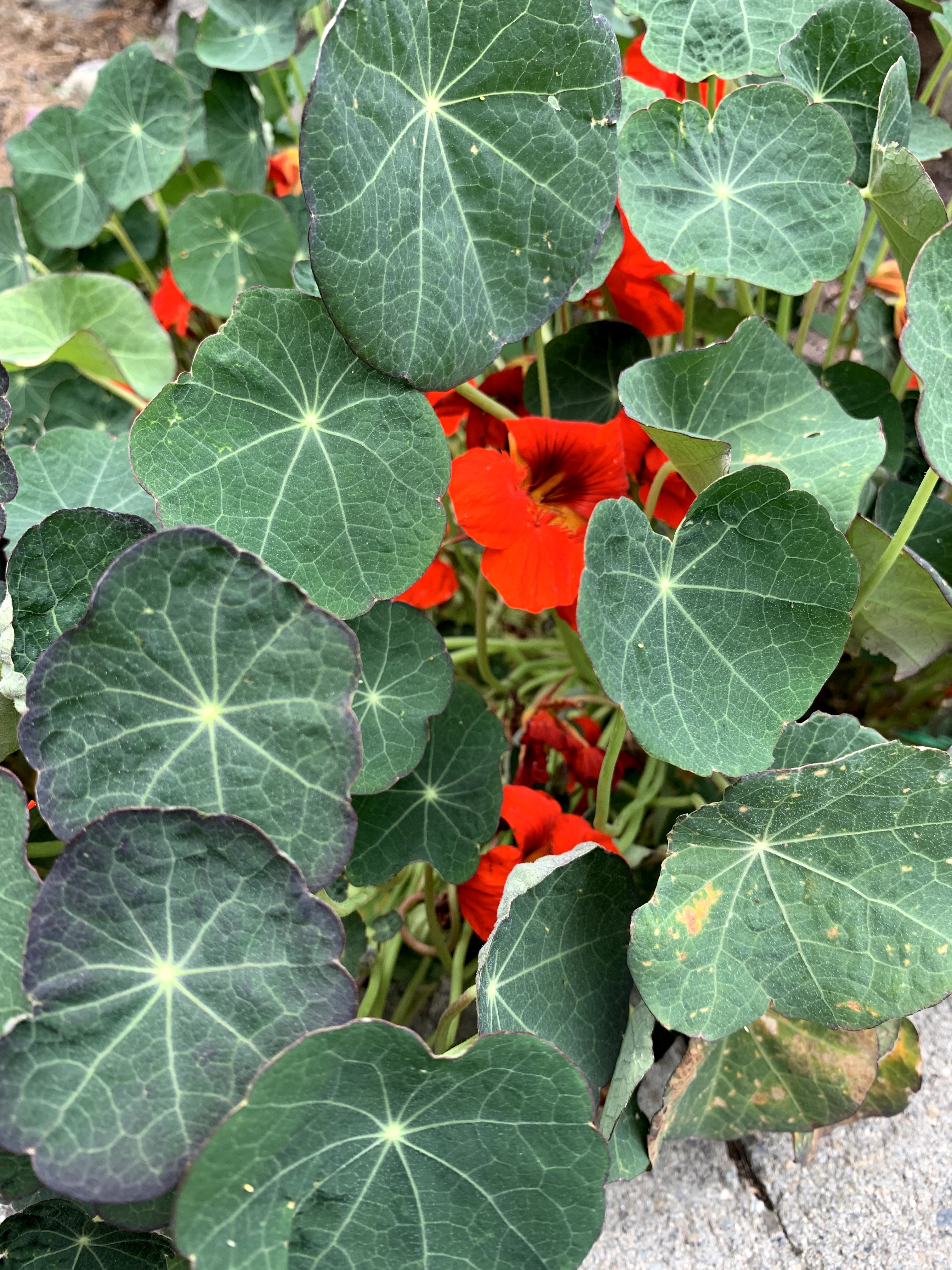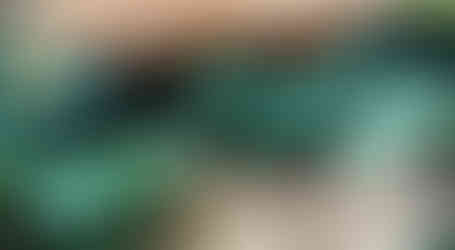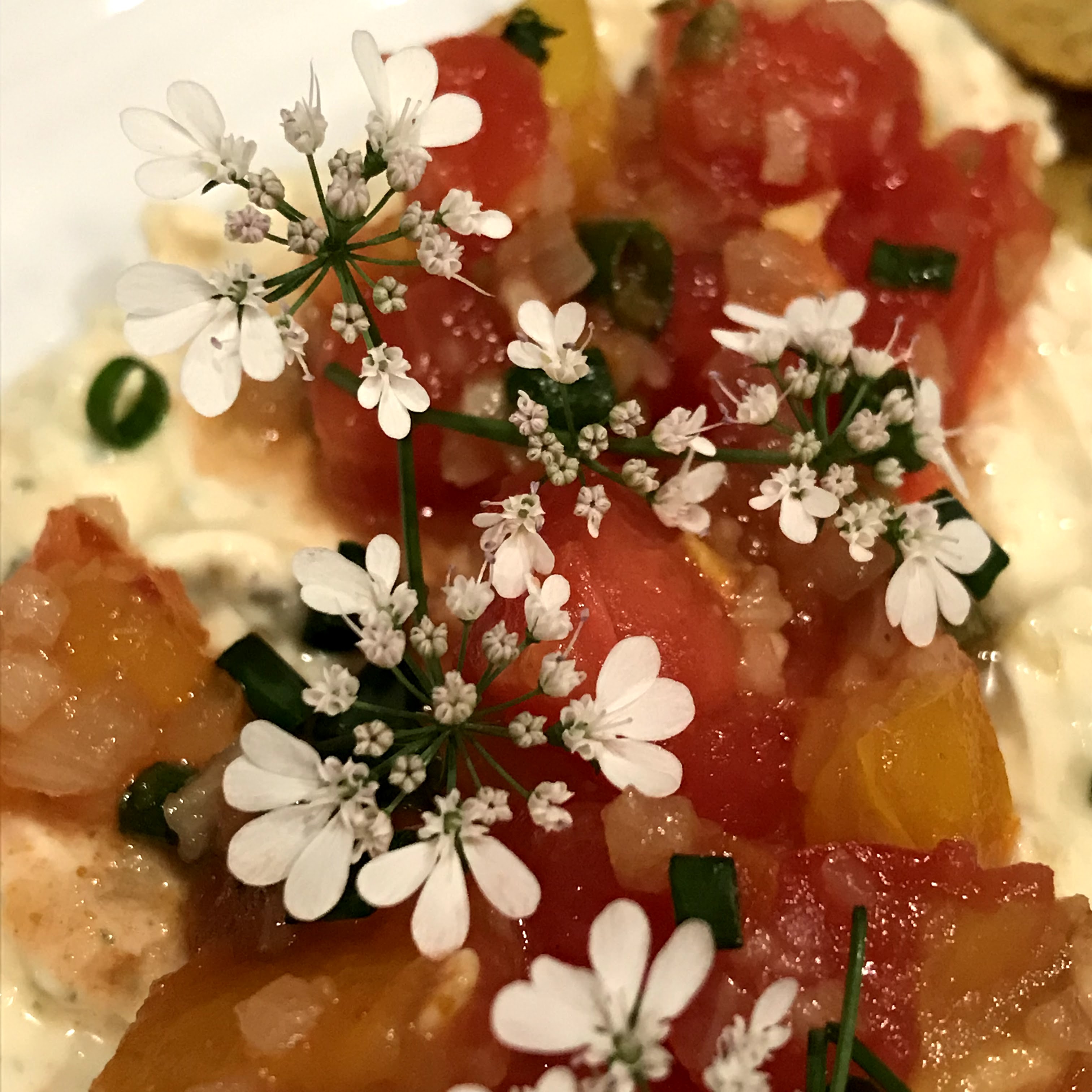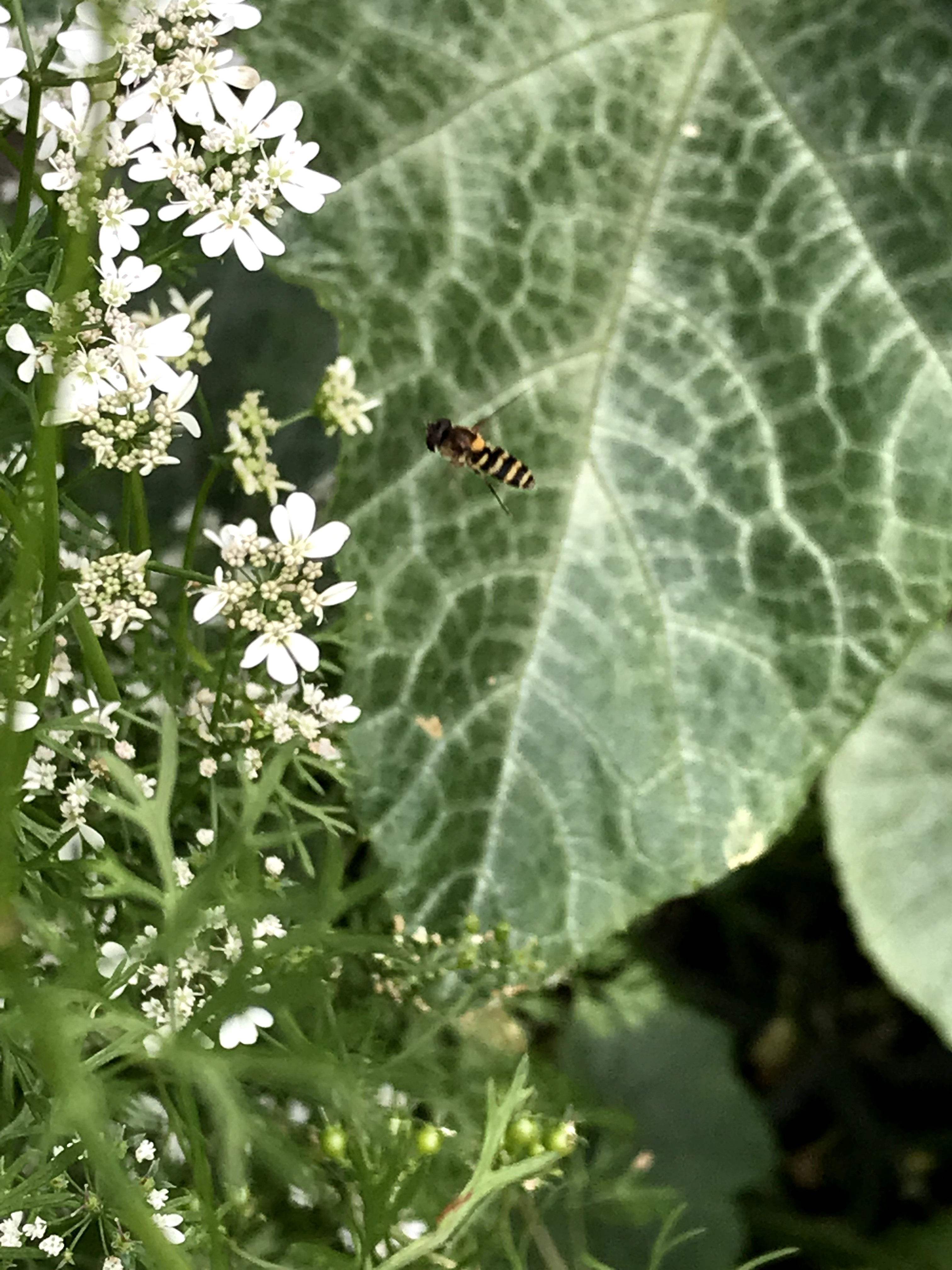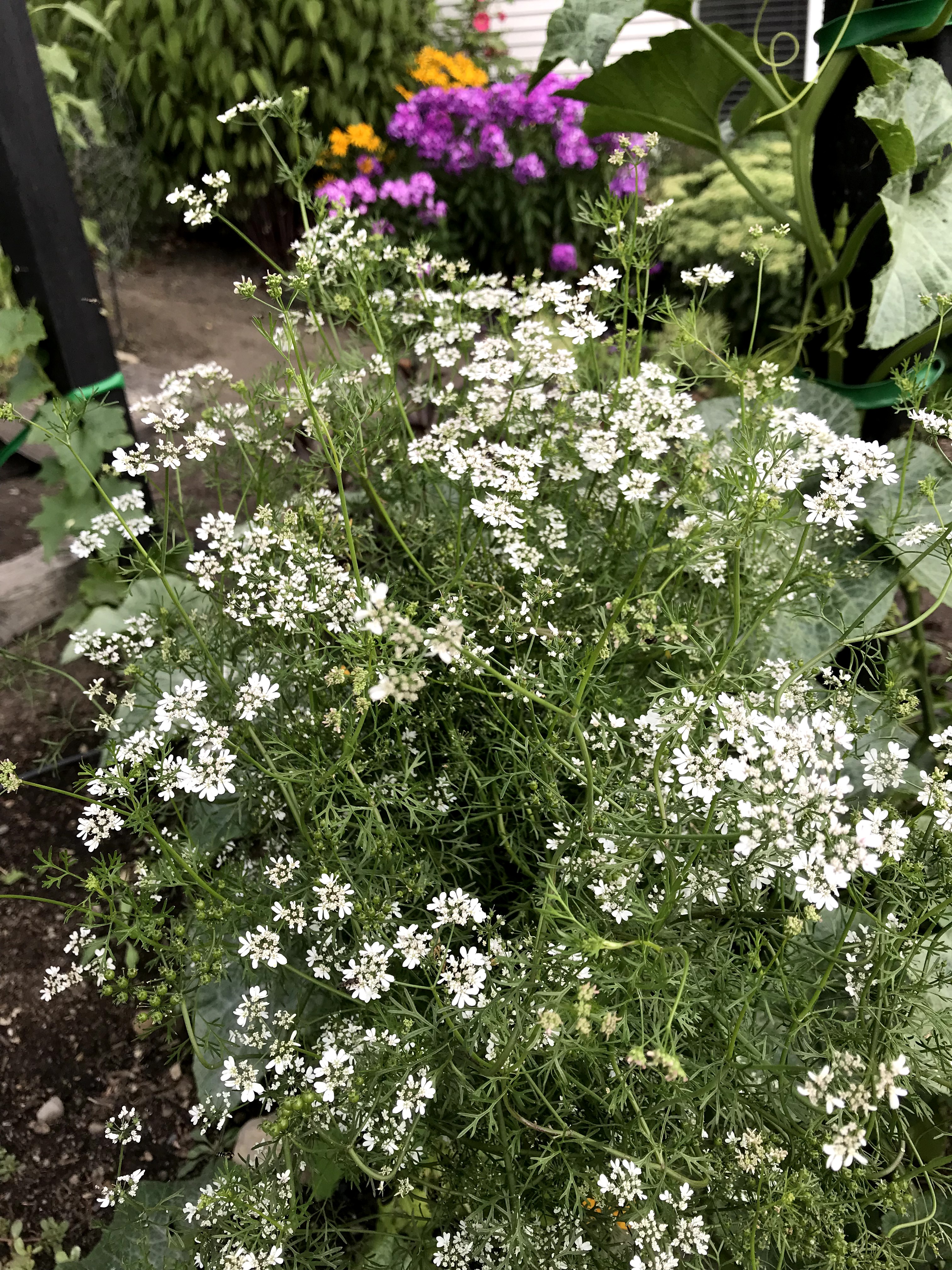Aphids & other pest companion plants
- Dana Kayal
- Feb 16, 2020
- 9 min read
Updated: Feb 6, 2023
Aphids Suck. They literally suck the sap from plant leaves. Blink and there are hundreds. Use these companion planting strategies to minimize their impact on your food crops while adding beauty & good bugs to your garden.
I had a MASSIVE nasty outbreak in my greenhouse last winter. I went away for 6 days and came back to THIS. I spent a FORTUNE on ladybugs and did DAILY sprays. OMG. I decided right there, NEVER AGAIN. I knew I'd be hit bad this summer too, so I was extra proactive!

For YEARS I did the spray bottles with insecticidal soap. With a big garden that was more work than it was worth. I'd heard that some plants repelled aphids and I was instantly down the rabbit hole googling and learned that attracting them to 'other' plants was more effective than repelling them. I read DOZENS of articles & studies, and picked up tidbits of wisdom here and there and applied them to my garden. Well here's my results - a total win! You've probably heard of companion planting, like Tomatoes and Garlic grow well together. Companion planting for pests has truly been garden changing for me! Monoculture of huge blocks of one type of plant is not nature's way. Take your cues from nature.
My maintenance time is dramatically cut back!!
My gardens look fantastic with flowers mixed in among my veggies
All my Aphid companion plants are edible too.
I have 4 flowers I swear by that I will plant in every garden that APHIDS (and other nasties) love. That's a good thing! Years ago I avoided these plants because they attracted aphids. I laugh now when I think of that, that's now their JOB in my garden!! I also plant 2 tasty herbs to 'repel aphids' or at least attract good bugs!
First though - When possible, remove the plants lower leaves that touch the soil. Leaves touching the soil is the best invitation to be an aphid host as they have a great chance of finding their way onto the plant, plus they can feed instantly, so on our Broccollini or Beets, etc I remove drooping leaves. NOTE the first crop of the season, there are aphids just waiting for you! You may want to leave the low leaves until they start to become infested and then remove & throw away.
It's also important to know there will ALWAYS be aphids in the garden, the goal is to keep them from damaging your main food crops.
Flowers & Radish as Trap Crops
Trap Crops attract the aphids, keeping them away from your food crops! When a segment of the plant is infested and there are no helpers (the lacewings and ladybugs haven't yet arrived) I cut off that section & take it to my green bin. NOTE! always I inspect leaves before I bin them. I often find ladybug, lacewing and hoverfly (flower flies/syrphid flies) larvae among the aphids, so if I've already cut it off I take that leaf and put it back in the garden at the base of the plants. I'd rather put 30 aphids back than remove one predator!
I'll have a blog done soon on the good bugs you want! Here's one! This weird green thing on this aphid infested sunflower leaf is a hoverfly larvae. Note, this year I'm growing buckwheat under my sunflowers, it's said to help with Sunflower aphids, the chickens love it & it improves the soil, so a win regardless!

Ladybug Nymphs will eat hundreds of aphids, so keep your eye out for these cool looking predators that look like baby crocodiles!!! It's the nymphs that are the big eater of aphids, not the adults, they're busy procreating! Check out this cool video of a nymph shedding it's skin! This quick video shows the whole lifecycle. The ladybug stages below were taken in my greenhouse and garden.
My Criteria for a Trap Crop
Self Sowing or easily grown
Add beauty and dimension or food, while being a workhorse
Flowers - Bloom all summer guaranteeing to attract bees to the nearby veggies
Edible is an added bonus! Note: these plants ATTRACT aphids... so I'm be doing a really good wash before eating, lol
Radish - I am not a massive radish fan, although love them roasted & sauteed. I'm growing dozens of radish this year in each Brassica and Greens area. They grow faster than everything else, the leaves are low and aphids love them. By the time they're ready to harvest you'll be removing a ton of aphids from the garden too. Here's my radish, first out of the ground in my greenhouse (Feb 12th), already collecting the first aphids.

Sweet Alyssum - Self Sowing Annual, non-invasive. Flowers and leaves are edible.
A delicate profusion of tiny white flowers that make a 4 to 8” carpet that smells like honey. It’s a punch of brightness everywhere and anywhere. Can be seeded by simply tossing on the soil and giving a light press. Can also sprinkle and go!
Flowers within weeks of seeding, bringing all the bees to your yard!
Drought & heat tolerant (once established).
Comes in many flower colours - I’m partial to the white
I LOVE it as living mulch! It keeps weeds down and moisture in. West Coast Seeds has it in their Cover Crop section LOVE that seed company!
Trap Crop for Leaf Miners - You won’t be eating your alyssum so who cares - plant it around every leaf you will eat - lettuce, chard, beet (if you’re not eating the greens, you’re missing out!), you get the idea! My greens interplanted with Alyssum had WAY WAY less Leaf Miner activity!
Trap Crop for Aphids - lure the aphids away from your lettuce, broccoli, cabbage, etc. I sprinkle alyssum when my other crops are 3-4" high, it will grow up as an aphid attracting carpet around the other plants. I fought aphids non-stop on one Broccolini. 30' away, the two planted with an Alyssum carpet with Borage nearby had none.
Improves soil by adding carbon once it’s done (Don't clean your fall garden!)
Attracts hoverflies https://ohioline.osu.edu/factsheet/ent-73 which lay their eggs, which then their larvae munch on Aphids!
The flowers attract beneficial wasps that feed on aphids. This plant has it all!
I am a square foot gardener, even in my large garden beds as it really minimizes weeding & I get more production of course!. Here's some photos of last years Alyssum and how I have planted one greenhouse bed, done Feb 12th. Once the plants are 3-4" tall I'll be sprinkling Alyssum everywhere to mulch and protect. I'm using my greenhouse to test a few new varieties before I get planting outdoors in April. The second photo is 3 tires tall, most of the tires are hidden by the Alyssum.
Calendula (Pot Marigold) - Self Sowing Annual. Gorgeous edible petals
Bright cheery masses of yellow or orange flowers all summer long.
Attracts Ladybugs, lacewings and hoverflies - The good bugs you want!
Attracts aphids, thrips and whiteflies. The pests you don't want! Better for them to eat the Calendula than your greens!
Grows well in the cool spring and fall, and withstands frosts, mine flowered right up to Nov.
Bees & butterflies love it
It helps repel cabbage looper, so this one is planted in every brassica bed!
Makes amazing salves and oils for skin ailments
Can be used to color rice, frosting, etc
This is the one I love the most, each stage of the flower looks different & the underside of the petals are a gorgeous burgundy, it's organic & makes a great cut flower.
Borage - Annual. This is really a rockstar! Poke a seed, walk away, not a big fan of transplanting. A must in every yard! Can be large if it has space or you can chop it back and add the leaves to your compost. Edible.
Attracts Aphids, they LOVE IT! I would have mass aphid clumps on it I could snip off, although I often left it because the ladybugs & other helpers arrived.
Bees love it. I put Borage at each end of my Greenhouse to attract the bees in.
Put it near melons, squash and cucumbers that need active pollination
It helps with Tomato Hornworm, by attracting the beneficial insects that kill it, so I have it planted hear my tomatoes! Seeing a hornworm hosting the larvea of Braconid Wasps is a thing to behold!! NEVER remove a hormworm in this state
Plant it near any cabbage, broccoli, kholrabi etc. All brassicas benefit from having borage nearby
Said to Improve flavor and growth of strawberries
My chickens love it, so I plant it in their yard and protect it by a tomato cage so they can't scratch it out.
It tastes delicious (like cucumber) and the flowers are beautiful in your food! (not for pregnant or nursing women)
Rich in minerals and vitamins for you or your soil!
Deer Proof
It has fantastic fleshy nutrient-filled leaves that make great compost or mulch
Below it's growing in a mass aphid attracting mound - Nasturtium & Borage
Nasturtium - Annual. Poke and go then allow to self seed. Vining or Clumping. Flowers and Leaves edible
Flower pods look like cool aliens!
I love the Tall Single Mix from West Coast Seeds. My greenhouse has 14' long vines wrapping around
Trap crop for Aphids, Cabbage white butterflies/cabbage worms
Plant with cabbage, broccoli and kale, cauliflower - all your brassicas
Cheap and cheerful - 1 plant will cover 4-5x the ground of a typical flower
Amazing ground cover/living mulch
Most vine like crazy, but they don't have tendrils so don't climb over and choke out other plants.
They can be trained up over an archway or up a fence
They will tumble out of a planter or hanging basket or cascade down a rock wall. The first picture below is TWO Nasturtium cascading down covering an ugly wooden wall
They are a Xeriscape plant, so ideal for a dry spot you want a pop of colour or for everyone that forgets to water their hanging baskets!
Can grow in sun or shade. In shade they'll have BIG leaves that can be used for salad rolls (they have a peppery hit!) and in sun they'll have smaller leaves and massive blooms. Use them under your trees or to hide an eyesore!
If you have chickens, they'll raise a statue to you. I grow these beside the coop every year and they eat ever bite they can get to (they are a semi protected snack bar). They self-medicate with this anti-worming and naturally antibiotic plant.
HERBS AS REPELLING CROPS AND ATTRACTING POLLINATORS/ Other good bugs
Chives and Garlic Chives. Perennial - can aggressively self sow, I embrace that as gorgeous pop of spring colour! Edible of course, even the flowers
It is said to Repels Aphids, Carrot Rust Fly, cucumber beetles & Japanese Beetles by scent.
Improves flavor & length of carrots. repels Carrot Rust Fly - My carrots were AMAZING this year, my first year planing them alongside my chives.
Great around all brassicas (which are aphid magnets, the scent may repel)
Plant around fruit trees to help with apple scab and borers
Plant with grapes to prevent pests and increase pollinators
Awesome ground cover with a bunch of purple or white blooms.
Important spring plants providing food and shelter for pollinators
Do not plant with beans or peas
Deer Resistant
I allow it to self sow and each spring leave the clumps that form in or around each veggie bed
That's a hummingbird moth in the middle photo
Cilantro - You want to plant this EVEN IF you hate Cilantro and won’t eat it.
This plant is so good for your garden, it actively attracts so many beneficial insects like Parasitoid Wasps, Tachinid Flies and Hover Flies.
It blooms later summer and fall. Heat forces it to bolt (make flowers) - and you WANT THIS! Flowers are what attract the pest killing army!
Repels aphids, potato beetles and spider mites
Grows well with or after nitrogen fixers such as beans and peas, this will make your Cilantro a nice bushy plant for better eating.
It’s a cool season plant, but we want it for flowers so don't choose a slow-bolting variety! The ‘prevailing wisdom’ is that after herbs go to flower we shouldn’t eat or keep them. Most people pull it when it goes to flower if they’re not collecting seeds. Nonsense! That's when it's working the hardest & benefiting you the most!
It’s gorgeous, the flowers are delicious, so you can eat it still PLUS it attracts fantastic insects - I'm going to keep harping on that, plant it even if you don't eat it. That's not a small wasp in the middle photo, it's a bad ass Hoverfly!
I poke a seed here and there, every couple weeks from spring through to fall, anywhere I have a small hole that a 12-16' tall plant approx 16" wide plant can fit.
Do not plant with Fennel
So that's it, congrats if you made it all the way though this in-depth aphid post! Go add some extra beauty to your garden and skip the chemicals!!
NOTE! If I find an aphid infestation on my food crops I spray them off with a hand held pump sprayer. I typically only have to do this in the early part of the spring season since the aphids seem to wake up earlier in spring than the helpers do. With my extensive garden I'd spend all summer spraying pests off plants, so I take this proactive approach instead. If you found this information, please share. The more of us that use natural methods to handle our aphids the more that bees and good bugs will flourish!
A few more articles and posts you may find helpful for natural gardening
Cabbage White Butterflies and Caterpillars - Avoiding a massacre
Lesson 14 - When to harvest your Squash
Lesson 16 - Hard Pruning your Squash and Tomato in August
Lesson 8 - Root Veggie Love - Starting and Thinning Happy Growing, Cooking & Eating!
XO Dana K
Find me on Social: FB Grow It Cook It Group FB Epicure Biz Page Instagram Scroll down to Subscribe to this blog ⬇


















